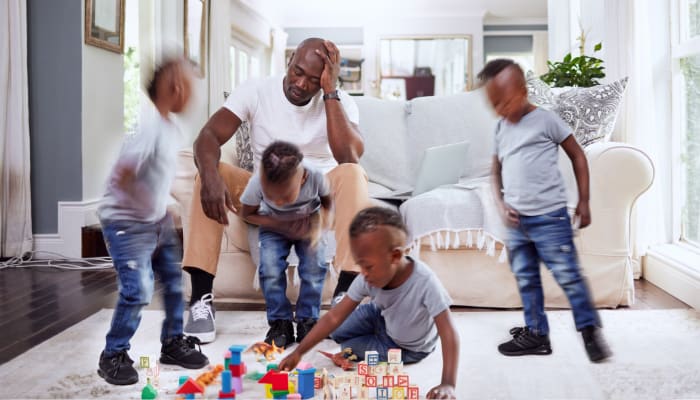By Guest Blogger Dr. Juan Santos, CRC, LCMHC, of Santos Counseling
As a dad, I see ADHD every day in my daughter. My wife and I are constantly working with her to build self-confidence, knowing the challenges that come with ADHD, and teaching her tools to navigate life as a child with ADHD.
Compassion is one of the first tips I want you to write down. Life is difficult. It is a simple and profound message. Our job as parents is to provide compassion to our children. Compassion is the generous gift of love and kindness.
I get to see my daughter sit and try over and over in an attempt to focus on the ten problems in front of her. Sometimes she jumps in and gets them done right away. Other times she does two and then wants to figure out why the carpet has a “weird color on it.” This leads us to investigate the carpet, and before you know it, the ten-question homework that was supposed to take 20 minutes turns into a 4-hour on-and-off process.
So, we, as parents, have a few options.
Option 1. We react harshly and blame our child for not getting the work done.
Option 2. We take long, deep (maybe multiple) breaths to connect with them on their level.
I prefer option two.
Once your child can feel that you are present and willing to provide love and kindness, they shift. This forms a supportive working relationship.
Teachers do a wonderful job of this. It always amazes me how well students do with behaviors like listening, taking turns, and showing kindness at school.
Way to go, teachers, on giving out compassion consistently!
3 Effective Ways To Redirect Kids Impulsive Behavior
One of the key reasons to learn how to redirect your child’s impulsive behavior is to remove misbehavior. Let me share a classic example. Luke from the TV show modern family. You can clearly see his ADHD behaviors.
One minute he is attempting to do his homework and the other, he shifts over to building a rocket. Not fully thinking about the risk of a rocket launching through the house or the consequence of missing the homework deadline.
- Observation. Take time to observe your child’s behaviors and document what takes place. Doing so can reduce assumptions and give you the edge in effective problem-solving. Start by observing how your child completes specific activities, such as homework. Pinpoint what works and what doesn’t. You may find that a clean room provides stronger focus and completion than doing homework at the dinner table while the television is on in the background.
- Schedule an appointment with a counselor. I love investing in my kids, and I’m sure that you do too. We, as parents, collectively practice this in ample ways. Counselors can teach kids and parents all about ADHD and clinically effective ways to address it.
- Teach your child how to self-regulate. One core symptom of ADHD is impulsivity. This can show up in the form of frustration or agitation. As such, teach your child how to manage their emotions while also learning how to identify the specific trigger (things) that provoke them. For my daughter, we found out that long periods of homework were a trigger. This led to her becoming frustrated and wanting to stop. We made a shift to give her breaks during homework. It was a complete game-changer.
Want to see more blogs like this and also get notifications on local events and happenings? Subscribe to our free weekly newsletters here.














